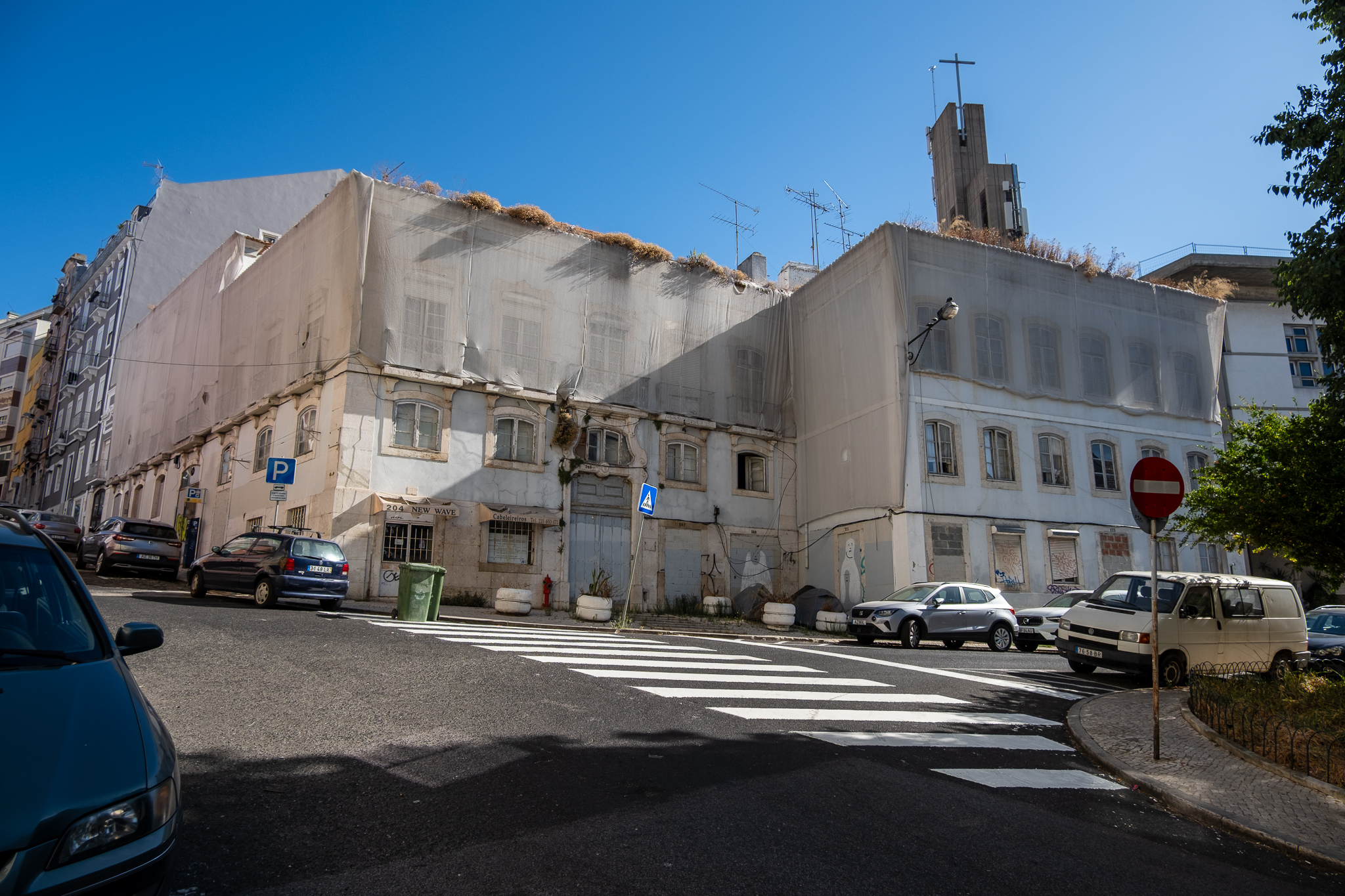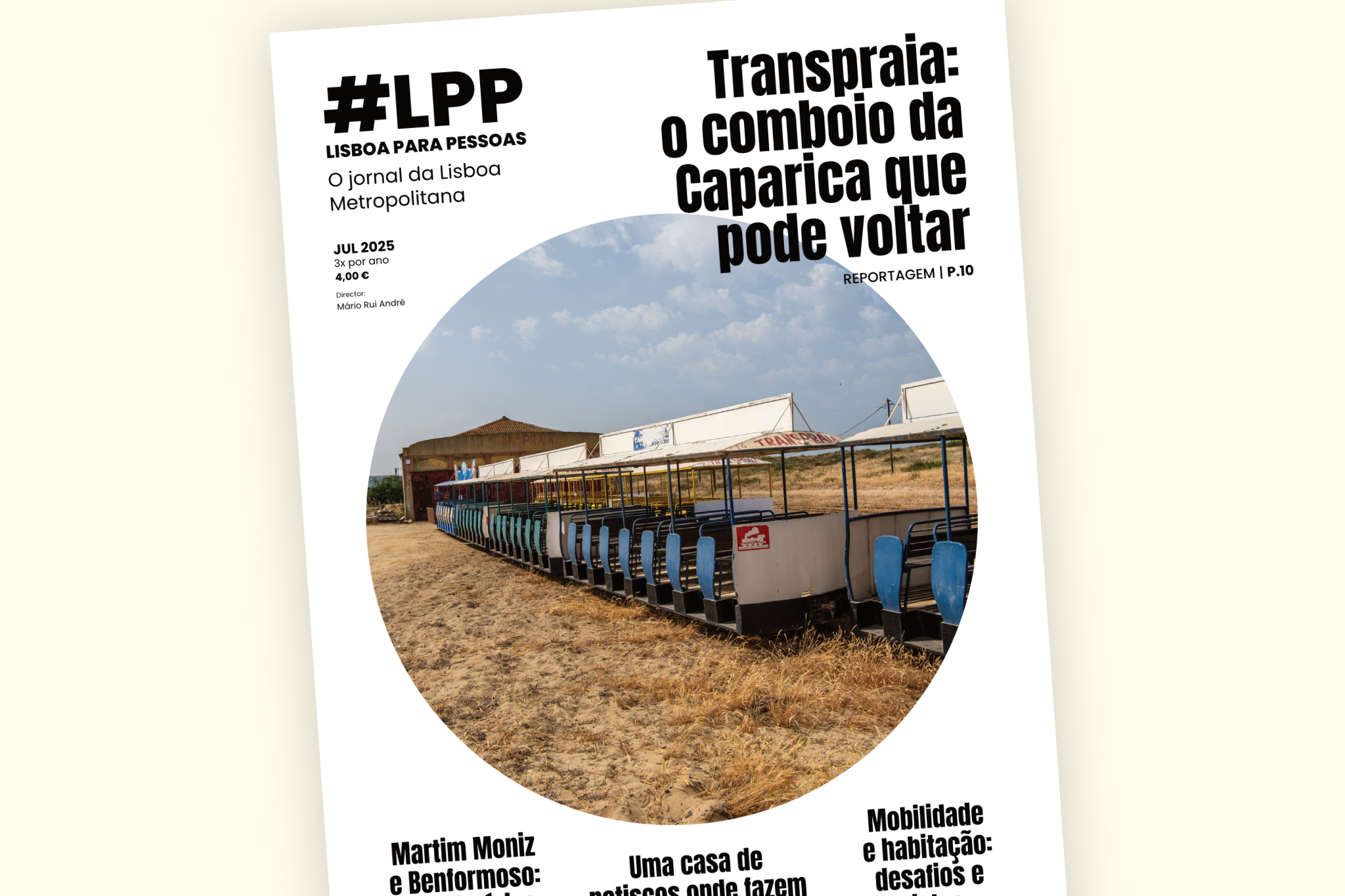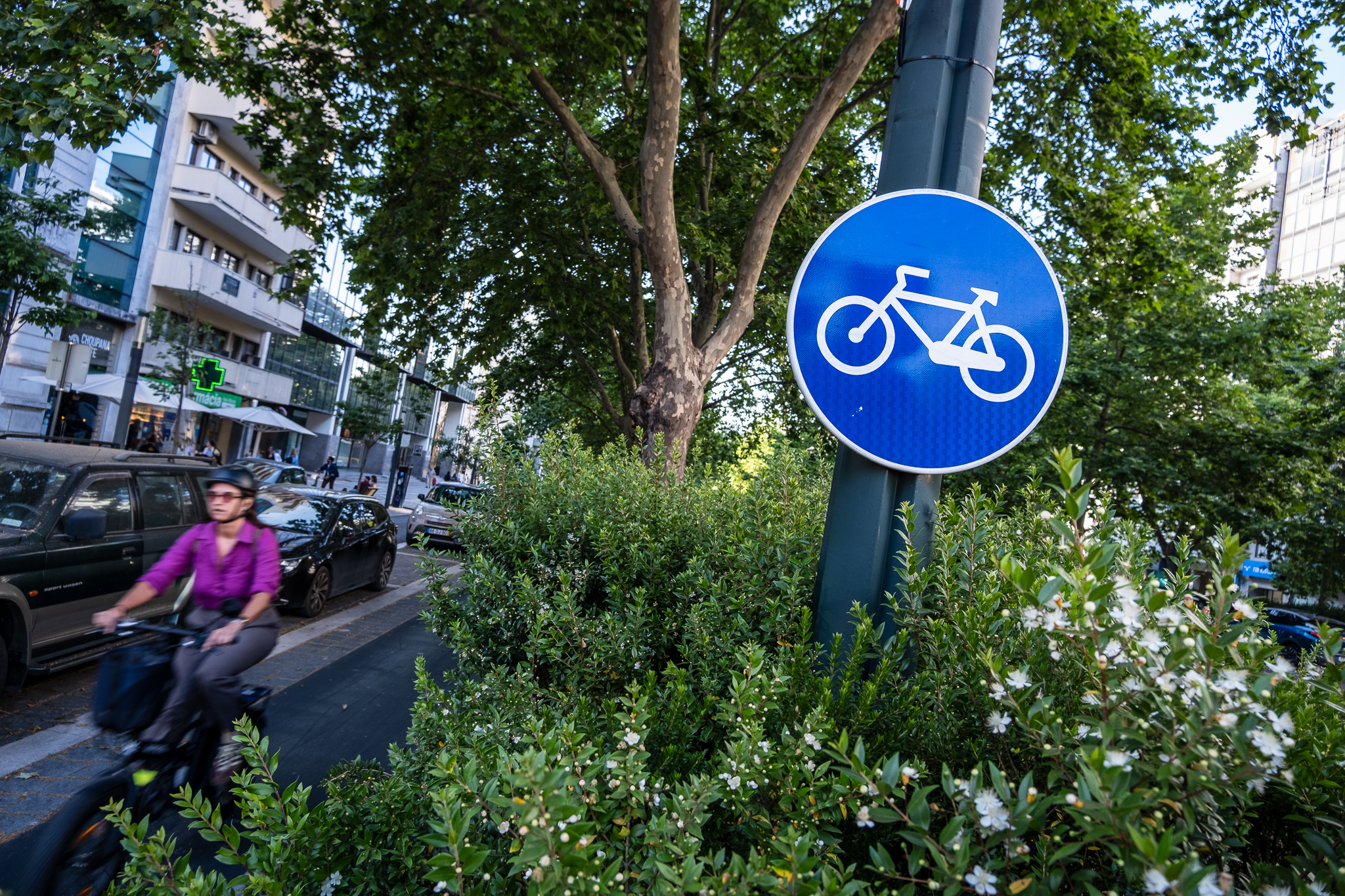2023 ended without being particularly rainy, unlike the end of the previous year. The heavy rainfall in December 2022 put Lisbon's General Drainage Plan on the media agenda, with the focus on the two tunnels that will take rainwater from the upper parts of the city directly to the Tagus, thus preventing flooding in the lower areas. On the eve of the start of excavation on the largest of these tunnels, LPP visited the construction site in Campolide and met the "Oli" tunneling machine.

Work begins this week on Lisbon's major drainage tunnel in Campolide. With a length of around five kilometers, it will end at Santa Apolónia, aiming to discharge the rainwater collected in the upper part of the city, near Monsanto, directly into the River Tagusand along the route. The tunnel's main function will be to prevent rainwater from reaching low-lying areas and causing flooding.
The tunnel will be built with a large tunneling machine, affectionately named "Oli". It was manufactured in China and transported in pieces to the construction site at Quinta do Zé Pinto, in Campolide, where it is being assembled. When LPP visited at the end of December, Oli was not yet complete. The tunneling machine is made up of several modules, with different functions, and its assembly is progressing as the excavation process continues - in total, the machine will be 130 meters long.



The excavation of this extensive drainage tunnel represents one of the largest engineering projects ever undertaken by the Lisbon City Council, and also the main milestone of the PLisbon General Drainage Plan (PGDL). This comprehensive plan aims to prevent flooding and, above all, to adapt the city to climate change, considering the forecast of more frequent heavy rainfall events, similar to those recorded in December 2022, which had severe consequences in Lisbon.
In addition to the tunnel extending from Monsanto/Campolide to Santa Apolónia, another shorter tunnel is planned, linking Chelas to Beato. Although it is only one kilometer long, this second tunnel will perform the same crucial function: leading rainwater from an elevated area of the city, Chelas, to the Tagus River. As there is only one tunnel boring machine available, the excavation of the two tunnels will follow a sequential approach: first, the Monsanto-Santa Apolónia tunnel will be excavated, and then the tunneling machine will be dismantled and transported to Beato to open the second tunnel (which will run in the opposite direction, from the riverside area towards Chelas).

LPP's visit to the construction site in Campolide took place as part of the Open House Europe's first annual conference. LPP and a group of architects from various countries were accompanied by the Lisbon General Drainage Plan (PGDL) team, coordinated by José Silva Ferreira. On that day, a Saturday afternoon, the tunneling machine was at a standstill. Not because it was Saturday, but because because the real digging will only start this week and, when it does, the machine won't stop for a single day, not even at the weekend. It will be intense and continuous work, 24/7, until the entire tunnel is dug out. On average, 12 meters will be made per day. It should therefore take Oli approximately 420 days (one year and two months) to complete the five-kilometer tunnel between Monsanto/Campolide and Santa Apolónia.






At Quinta do Zé Pinto, in Campolide, there is a large open pit, the size of a soccer field. At the bottom, we find Oli, with her "head" at the door of the future tunnel, ready to start digging - so far, only four meters of tunnel have been drilled for testing purposes. In the shaft, you can also see the various curved pieces of concrete that the tunneling machine will fit together to shape the future tunnel. In all, 3,500 concrete rings will be assembled, using 9,000 of these pieces.
Also visible in the well is the famous Alcântara drain, through which flows not only the Alcântara stream - which was buried in 1975 to allow the subsequent urbanization of the Alcântara Valley - but also some sewers. At present, the stream flows into the Tagus, stopping at the Alcântara wastewater treatment plant, but the tunnel's capacity quickly runs out when it rains heavily. Therefore, the new drainage tunnel will not only have the new function of responding to the new climatic challenges, but will also remove capacity from the old Alcântara channel; the aim is for the water that arrives in Lisbon via the so-called Alcântara stream, coming from Amadora, to be able to follow the new tunnel to the Tagus, freeing up the old channel to respond more locally to rainfall and domestic sewage.








The tunnel that Oli will now build will be five kilometers long and have an internal diameter of around 5.5 meters. Starting in Campolide, it will follow Avenida da Liberdade, Rua Santa Marta and Avenida Almirante Reis, where there are already construction sites underway. Rainwater will be collected at these three main points.
But the main collection point will be in Campolide, next to Monsanto, where one of several anti-pollution basins associated with the new tunnels will be built. These anti-pollution basins will store the first rainwater - the most polluted because it carries the waste deposited on the surface of the sidewalks - and carry out a prior decantation treatment, later leading it to the wastewater treatment plants. In this way, it will be possible to increase the volumes of already treated water that flow into the Tagus, minimizing pollution. This water cycle between the basins and the wastewater treatment plants will also allow some rainwater to be reused in the city, for example for watering gardens or washing sidewalks.



The construction of the two drainage tunnels is an "invisible work" that will prepare Lisbon for the future when heavier rainfall is expected. The tunneling machine will be working continuously, requiring the constant presence of 10 workers, who will rotate in shifts; part of this team will be at Oli and another part outside. As the excavator moves deeper into the future tunnel, the missing modules will be progressively added until the entire length of the machine is complete, as currently not all the modules fit into the shaft. Oli includes a cabin for operating the machine, a generator and a transformation point. It also has several other specialized sections, such as one dedicated to oils, which are essential for the continuous lubrication of the machine.
The "head" of the tunnel boring machine will be drilling, building the tunnel by placing the aforementioned curved pieces of concrete, which are 30 centimeters thick and 1.8 meters wide. By drilling the tunnel, Oli will be dumping crushed earth and stone - soil that is considered contaminated by the European Environment Agency (EEA) standards because it contains a lot of chromium and lead, and will therefore have to be sent for incineration in trucks. Under the ground, the tunneling machine will dig to an average depth of 70 meters, following GPS coordinates to "know" the way.
Lisbon's General Drainage Plan (PGDL) is the result of a total investment of around 250 million euros, with this tunnel between Monsanto/Campolide and Santa Apolónia accounting for 130 million of that. Excavation was scheduled to begin in early 2023, but was delayed by several months due not only to archaeological finds at the Campolide construction site, but also to adjustments that had to be made due to new land legislation. The tunnel will have the maximum capacity to handle a volume of water of 180 cubic meters per second, an extreme situation that can occur approximately once every 100 years. Lisbon will be properly prepared for this eventuality, which means it will also be ready to deal with less intense rainfall events.






